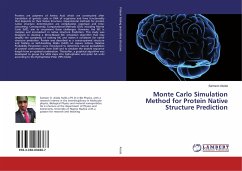Structure Prediction is one of the most important aspects of Structural Bioinformatics, Protein Docking and Drug Designing. The current study is performed on MTHFR enzyme. It plays an important role in folate and homocysteine metabolism by catalyzing the conversion of 5,10-methylenetetrahydrofolate to 5- methyltetrahydrofolate, used for homocysteine remethylation to methionine. MTHFR mutations have been found in a large number of diseases. However, the structure of MTHFR is still unknown, thereby limiting the understanding of structure function relationship to the diseased state. Different Bioinformatics methodologies were used to predict and compare the 3D structure of the wild-type and its mutants. The predicted models were visualized by VMD, RasMol and Pymol. Evaluation of the predicted models was performed using DFIRE, Verify3D, ANOLEA and PROCHECK. Selected Model was compared with its mutants and then simulated. MTHFR mutants were seen to have decreased number of serine phosphorylation sites as compared to wild-type. Phosphorylation seems to be playing a significant role in function of this enzyme.
Bitte wählen Sie Ihr Anliegen aus.
Rechnungen
Retourenschein anfordern
Bestellstatus
Storno








